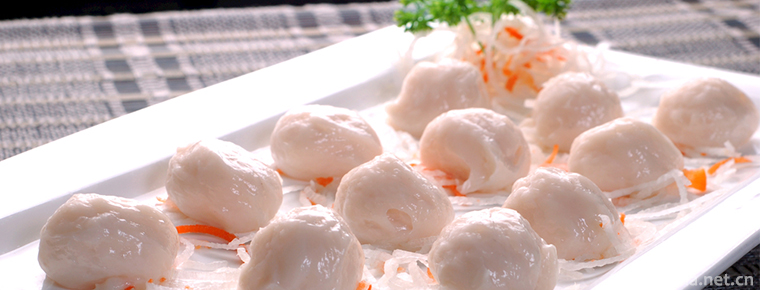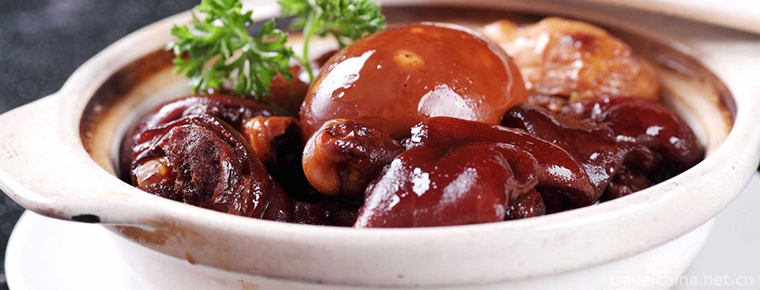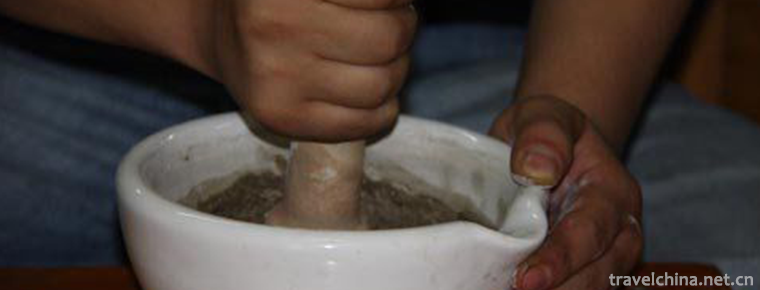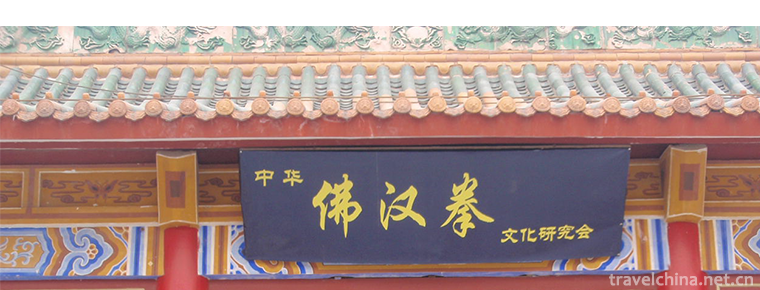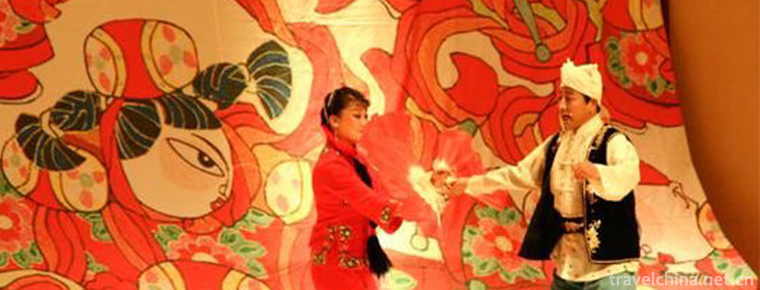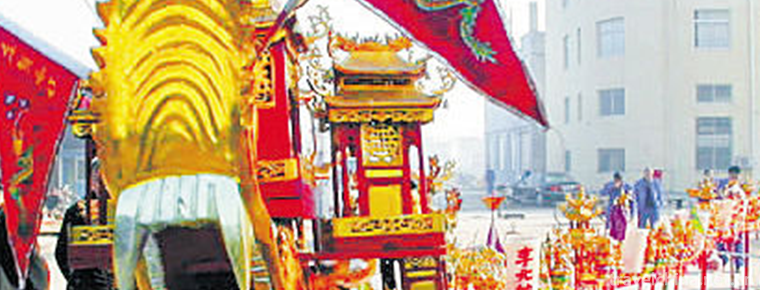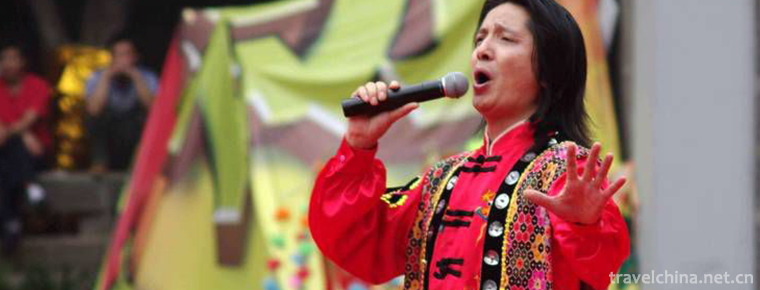Sanqing Mountain Scenic Spot
Sanqing Mountain, also known as Shaohua Mountain and Yashan Mountain, is located at the junction of Yushan County and Dexing City, Shangrao City, Jiangxi Province, China. The three peaks of Yujing, Yuxu and Yuhua are just like the three Taoist gods of Yuqing, Shangqing and Taiqing sitting on the top of the mountain. Yujing Peak is the highest, with an elevation of 1819.9 meters. It is the fifth highest peak in Jiangxi and the highest peak in Huaiyu Mountains. It is also the source of Xinjiang River. Sanqing Mountain is a famous Taoist mountain, a World Natural Heritage Site, a World Geopark, a National Natural Heritage Site and a National Geopark.
The main body of Sanqing Mountain is 12.2 kilometers long from north to South and 6.3 kilometers wide from east to west. Its plane is lotus-shaped and inclines from southeast to northwest. The Huaiyushan tectonic fast body unit is located in the junction zone of Yangtze PALEOPLATE and Cathaysian PALEOPLATE in the southeastern part of Eurasia plate. Located in the hinterland of Huaiyu Mountains, it belongs to the Zhongshan topography characterized by structural erosion of granite. The mountain is steep in the east, South and west, and slightly slow in the north. From the foot of the mountain to the top of the mountain, the horizontal distance is 5 km, and the altitude increases steeply from 200 m to 1816 m .
The dense distribution of granite micro-topography of different origins in Sanqing Mountains shows the most densely distributed and diversified peak forests in the known Granite Landforms in the world; 2373 species of higher plants and 1728 species of wildlife constitute the most Biodiversity Environment in East Asia; more than 1600 years of Taoist history has bred rich Taoist cultural connotations. According to the layout of the Eight Diagrams, the Sanqing Palace Ancient Architectural Complex was appraised as the "Open-air Museum of Ancient Taoist Architecture in China" by the Group of Cultural Relics Textual Research Experts under the State Council.
According to the World Heritage Conference, Sanqing Mountain displays unique granite pillars and peaks in a relatively small area. The rich granite modelling stone combines with a variety of vegetation, far-near changing landscape and breathtaking climate wonders, creating unique landscape aesthetic effect in the world and presenting fascinating results. Natural beauty. China National Geographic magazine has chosen it as one of the "five most beautiful peaks in China". Sino-American geologists agree that it is "the most beautiful granite on the western Pacific rim".
The first oceanic immersion of Sanqing Mountains occurred in the Mesoproterozoic 1.4 billion years ago. At that time, the crustal movement in the Sanqingshan area was in the stage of "geosyncline" subsidence. The sea water was submerged for 400 million years. The complex marine clastic rocks of Shuangqiaoshan Group, thousands of meters thick, were deposited with submarine volcanic eruptions. After the Jinning Movement, the history of geosynclinal subsidence was ended, the crust began to return and rise gradually, and the outflow water was land. The Sanqingshan area entered a relatively stable "platform" stage. One billion years ago, the Sanqingshan area became an island arc in the South China Ocean. Around 950 million years ago, the ocean basin disappeared and the Yangtze Paleoplate collided with the Cathaysian Paleoplate. The Sanqingshan area is located in the PALEOPLATE junction zone. Since the Mesozoic, intracontinental A-type subduction and intracontinental extension have laid a geological structure and geographic framework, providing a favorable geological environment for the formation of Sanqingshan granite geology and landform, the multiplication of organisms and the development of human beings.
Around 900 million years ago, the Yangtze Paleoplate collided with the Cathaysian Paleoplate and became a part of the Rodinia Supercontinent, leaving behind precious remnants of the ancient oceanic crust, namely the ophiolite melange belt (968 million years) and the amphibole schist (866 + 014 million years), which are important witnesses of the PALEOPLATE docking and the Jinning orogeny. When the Rodinia supercontinent broke up and Sanqing Mountain was located in the transitional zone between Yangtze plate and South China rift basin, it formed marine molasse-flysch and bimodal volcanic rock formations. In the early South China Period, the area was located in the coastal-epicontinental sea sedimentary environment, mainly composed of clastic formation deposits. Following the "Snowball Event", the Nantuo Formation moraine rock, a relic of ancient glacial activity, was left behind.
During the Sinian period, the continental crust was basically consolidated, the climate became warmer, and the ice and snow melted. At the end of the Sinian period, the second ocean immersion took place. The seawater immersion lasted for 160 million years, and lasted until the end of the Ordovician period. The shallow marine sandstone shale and carbonate rocks with a thickness of more than 4000 meters were deposited, and they also contained marine paleontology such as trilobite, graptolite and sponge. Shi, deposited a set of shallow marine muddy siliceous and carbonate formations. After the Caledonian Episode I orogenic movement at the end of the Ordovician, the Sanqing Mountains were completely separated from the marine environment and no longer accepted sedimentation. In the early Silurian period, 440 million years ago, although the third ocean immersion occurred, the sea water only reached the edge of the southern corner of Shandong Province in the Sanqing Dynasty. More than 200 million years ago, Sanqing Mountain ended its long history of oceans and began to enter a new stage of inland development. 180 million years ago, in the late Jurassic and Cretaceous, the Sanqing Mountains were subjected to an unusually strong orogenic movement, i.e. the Yanshanian movement, accompanied by large-scale acid magma immersion, which laid the geological foundation for the Sanqing Mountains. The Mesozoic is an important period of granite diagenesis and mountain formation in Sanqing Mountains. It is also the foundation period of granite geology, granite geomorphology and granite ecology. Since then, through the Cenozoic changes, it has created the unique granite landscape and unique ecosystem.
After the Triassic Indosinian movement, the Sanqing Mountains and their adjacent areas were complex synclines with relatively low terrestrial potential. Since then, the basin-range geomorphic pattern seen today has gradually formed.
During the embryonic stage of basin and range from Middle to Late Jurassic to Early Cretaceous, strong intracontinental orogenic movement occurred in the area due to the interaction between Eurasian plate and Paleo-Pacific plate. With the intracontinental subduction of deep faults in northeastern Jiangxi Province, the NE-trending Sanqing granite batholiths were formed, and the Huaiyu Mountains began to assume a compressive "depression-mid-uplift" type. Low and gentle uplift, and gradually weak denudation, there are continental basins on both sides. At that time, the ancient Eurasian continent, including the Sanqing Mountains, was once connected with the ancient North American continent.
During the Late Cretaceous basin-range extensional formation period and the Himalayan period, the crust extends strongly after orogeny, resulting in large-scale faulting. The Huaiyu Mountains are rapidly uplifted and denuded. The granite body exposes to the surface. The denudation thickness is estimated to be about 4000-5000m. Unbalanced faulted basins are formed on both sides of the mountain range, forming red clastic rock fault basins. The basins on the north side are smaller than those on the South side. The Xinjiang fault basin on the south side is larger, and the thickness of red clastic rocks is 2000-3000m. There is a great contrast between mountain and basin. It is the main forming period of the Huaiyu Mountains. Eurasia and North America began to separate. From Paleogene to Neogene, the basin and range slowly changed, which is the relative dormancy period after the crust extends strongly. The mountain erosion is weak, the basin shrinks and the deposits are absent.
During the Quaternary basin-ridge transformation period, the crust rose slowly in a wave-like manner. In the upper part of the Huaiyu Mountains and near the foothills of the Sanqing Lake, the Kashi Tefeng Forest retained three-level planation planes, and the Xinjiang Valley formed three-level terraces. From the Huaiyushan Mountains, the foothills to the Xinjiang Basin, the crustal uplift decreases in turn. At the same time, differential uplift and subsidence occur along some faults. Sanqing Mountain is controlled by three normal faults around it, and then slowly uplifted again. Under the background of the uplift of the Huaiyu Mountains, the "uplift and uplift" formed, which became the highest peak of the Huaiyu Mountains and the landscaping period of the peak forest landscape of the Sanqing Mountains.
Regional stratigraphy
From Proterozoic to Quaternary strata, the strata in Sanqingshan area are exposed to varying degrees. It includes Zhangcun Group, Heshangzhen Group, Nanhua System, Sinian System, Paleozoic and Mesozoic in Mesoproterozoic and Neoproterozoic.
The Zhangcun Group of Mesoproterozoic and Neoproterozoic, distributed in the northern part of Sanqingshan, is an island arc OPHIOLITIC MELANGE in the oceanic basin. Its rock assemblage consists of shallow metamorphic spilite, quartz keratophyre, volcanic tuffaceous-argillaceous turbidite deposits and a large number of ophiolitic blocks. The Neoproterozoic is mainly located in the northern part of Sanqing Mountains. The lower part of the Neoproterozoic is Heshangzhen Group, with shallow metamorphic sandstone and slate as the main rift-type bimodal volcanic rocks (basalt and rhyolite), unconformity on the Zhangcun Group; the middle part is Nanhua marine clastic rocks and moraine-mudstone-conglomerate limestone; the upper part is Sinian siliceous rocks. And carbonate rocks.
Paleozoic mainly distributes around and around Sanqingshan Mountains. Cambrian is dominated by carbonate rocks with mud and siliceous shales and black shales at the bottom; Ordovician is dominated by shale with tumorous limestone, producing abundant graptolite fossils; Silurian is muddy clastic rock; Devonian is sandy conglomerate, quartz sandstone and silty sandstone. Shale is often unconformity over the pre-Devonian; Carboniferous and Permian are carbonate rocks. The Mesozoic is dominated by Jurassic and Cretaceous.
The Triassic is locally distributed, with carbonate rocks and shales in the middle and lower part and coal-bearing clastic rocks in the upper part, which are often unconformity with the early strata. The Jurassic occurs in the marginal zone of the Mesozoic basin around Sanqing Mountains. The lower part is light-colored sandstone, the middle part is variegated sandstone shale and produces silicified wood fossils, and the upper part is continental volcanic complex. The Cretaceous is distributed in the Mesozoic continental basins around Sanqing Mountains. The red and variegated clastic rocks are dominant, the lower part is continental volcanic clastic rocks, and the upper part contains dinosaur eggs and dinosaur skeleton fossils.
The Cenozoic only developed Quaternary, and its distribution was limited. It mainly distributed in valleys, depressions and plains, mainly in Alluvial-diluvial clay, sub-clay, sand-gravel layer or gravel clay layer .
Fold structure
Distributing in the northwest and eastern part of Sanqing Mountains, it is a NE-to-Jurassic fold composed of sedimentary caprocks of the South China-Silurian system. Regional folds of this period are often covered by stratigraphic unconformities since Jurassic, so it is inferred that they should be Indosinian folds. There are:
(1) Loess hill anticline: located in the northern and western part of the Sanqing Mountains, it belongs to a part of the regional Loess Hill-Kaihua anticline. Its axis moves to the northeast, and the folds dip to the northeast and spread to the southwest, extending about 15 km in the area. The axes are nearly upright, and the occurrences of the two wings are disordered. The occurrences of the north-west wing are steep, ranging from 300 to 350 30 to 75 and the south-east wing is slow, ranging from 120 to 150 30 to 60 respectively. The core stratum is South China stratum, and the wing stratum is composed of Sinian-Ordovician stratum. The southern wing is widely exposed, and some secondary anticlinal structures are often formed.
(2) Huameishan syncline: distributed in the eastern part of the north of Sanqing Mountains, its axis strikes northeast-southwest, its south-west end starts at the side of Huaiyushan rock mass, its north-east end extends to the region through the source, its axis strikes 67 degrees, its north-west wing is slightly steep, its dip angle is 40 60 and its south-east wing is gentle, its dip angle is 30 ~50. The core stratum is the Early Ordovician Yinzhubu Formation, and the wing is composed of the Late Cambrian strata .
Fault structure
The faults in the area are well developed, and the faults are mainly NE-trending, followed by NE-trending and NW-trending. From the time of formation, NE-trending faults are the earliest, NNE-trending faults are the second, and NW-trending faults are the latest. The main faults are normal faults and reverse faults. The main faults are Fenglin-Zihuzhen fault zone, Xiaokeng-Bajiaowu fault and Bajiaowu-Xikeng fault. They are all normal faults, forming fault valleys and cutting the main part of Sanqingshan into a "triangular fault block mountain".
(1) Fenglin-Zihuzhen Granite Fault: Located in the south of Shandong Province of Sanqing, it is composed of several faults extending from 50 to 60 degrees in the northeast, inclining to the southeast with a dip of 60 degrees. The north-west plate rises and the south-east plate falls. Along the faults, there are cleavage zones, schistosity zones formed by early shear activities and fault breccia zones formed by late activity, which are 10-40 m wide. They are multi-stage active faults and valley water systems along the faults. Such as linear gullies, knee-like extension of the water system.
(2) The Egongling-Xiaxikeng granite fault is located in the eastern part of Shandong-Northeast of Sanqing Mountains. It strikes northwest and inclines Northwest with an inclination of 65-70 degrees. Its south-west wall rises and the north-east wall falls. There are schistose granite and structural breccia on the fault plane. Rocks are strongly silicified and minerals recrystallized. Quartz clusters and agate are found. Fault Valley landforms are formed along faults, and fault cliffs formed by silicification zones are also intermittently visible in the southeastern part of the fault valley.
(3) Xiaokeng-Bajiaowu Granite Fault: Located in the northwestern part of Sanqing Mountains, it strikes NNE, inclines NW and dips 70 degrees, cutting off the NE-trending faults. Its southeast east wall rises and the Northwest West wall falls. Structural breccia, silicified rocks and cataclastic rocks are developed along faults. Fault Valley geomorphology is formed along the strike of the main fault .
Rock formation
The magmatic rocks in Sanqingshan area are frequently active and widely distributed. The magmatic rocks are mainly ultraacid intrusive rocks, that is, the Sanqingshan granite body formed in the late Yanshanian period (part of Huaiyushan rock body), which constitutes the main body of Sanqingshan. Sanqingshan granite body is located in the central part of Sanqingshan mountain body. Its plane shape is irregular, and its exposed area is about 98 km2. Granite intruded into the South China-Ordovician strata on the southern flank of the Loess Mountains anticline. It occurs in the form of bedrock and rock stocks. The intrusion boundary is irregular, wavy, bay or branched, and the contact surface tends to be wall rock. In the inner contact zone, there are dense and hard fine-grained condensation edges 1-3 cm wide, and the residual roof is common in rock mass, which is shallow denudation. The outer contact zone has strong thermal contact metamorphism, forming a thermal contact metamorphic halo with a width of more than 500-2000 meters. Primary flowing structures are not well developed and inherited dikes are well developed, including granite fine-grained rock, pegmatite, granite porphyry, diorite porphyry and gabbro diabase dikes. Many dark minerals of different sizes and irregular shapes are relatively enriched in dioritic inclusions. The wall rock alteration mainly includes skarnization, silicification and chloritization. The main mineral components of the rock mass are potassium feldspar, plagioclase, quartz and biotite.
In the Sanqingshan granite body, dioritic inclusions with relatively rich dark minerals of various sizes and irregular shapes are common. The granite complex is obviously controlled by NE-trending faults, but the intrusive contact boundary of the rock mass is irregular, the residual roof of the rock mass is developed, the exposed width of the thermal metamorphic zone is large, the primary flow structure is not obvious, and the average oxidation coefficient of the rock is 0.47. The main intrusive period of granite batholith is divided into three facies zones, the marginal facies is fine-grained porphyry-like potash feldspar granite, the transitional facies is medium-grained to medium-coarse-grained porphyry-like potash feldspar granite, and the central facies is coarse-grained porphyry-like potash feldspar granite only in the valley, and the residual roof of wall rock is more, which indicates that the denudation degree of rock mass is shallow. The emplacement depth of granite is estimated to be 4000-4500m.
Lithology and lithofacies
The main intrusive bodies of Sanqingshan granite can be divided into three facies belts:
Marginal facies: lithology is fine grained (fine grained-porphyry) porphyry biotite monzonite;
Transitional facies: medium-fine porphyry biotite potassium feldspar granite;
Internal facies: lithology is medium-coarse grained porphyry biotite potassium feldspar granite.
The three facies zones do not form concentric annular shape on the plane, especially the irregular distribution of internal facies. This is due to the great change of tectonic stress field, the turbulent environment of magma condensation and crystallization, and the uneven degree of topographic cutting and denudation after the rise of the crust.
Internal structure of granite bodies
In the interior of Sanqingshan granite body, there are mainly two groups of vertical joints, one is the NE-NE strike, the other is the NW strike, which constitute the combination mode of chessboard format. These jointed fissure structures are characterized by tension-shear, sparse density, high strength, long extension, deep cutting and zonal occurrence, which are the main control transformation of Sanqingshan granite landscape. In addition, a group of near-horizontal joints are developed in the area, which together form a network of cracks. Through erosion, erosion and weathering, a variety of unique landscapes are formed. Joints can be seen in most peak forest landscapes. The former tends to converge from south to west to north-east, forming broom-like output on the macro level, with a large scale of development, and tending to be banded in space. It is the main structure controlling the Western peak wall (heavy wall in the West Sea, Great Wall in the Nine Days) and the southern Canyon (Fushoumen, Yitian, etc.). The latter is generally northwest, and slightly South-North in the eastern part of the south. Its scale gradually increases from north to south, and its belt-like output is the main structure controlling the central peak column, the eastern South Peak wall and some canyons. In addition, a group of near-horizontal joints are also developed in the granite, which is the dominant structure for the modeling of stone scenery. Peak walls, pillars and other landscapes are cut by horizontal joints and eroded by weathering to form a variety of unique landscapes .
Ge Hong, a medical scientist, Taoist theorist and famous Taoist scholar of the Jin Dynasty, came to Sanqing Mountain to refine alchemy during the period of Dongjinping. During the reign of Tang and Qianfu, Dr. Zi Jinguanglu and Taishou Wang Jian of Xinzhou retired with their families in Dayuanwu (Dayuanwu Village of Dexing Anti-Daxiang). Six years (1170) of the Song and Qianlong Dao, Wang Jian's 10th generation Sun Wang Lin created the concept of the Three Qing Dao, which was destroyed in the years of chaos and famine.
During Jingtai period of Ming Dynasty (1450-1456), Sun Wang Hu, the 28th generation of Wang Jian, rebuilt the Sanqing Palace on the old base, set up scenery along the way, added palaces, and offered food and feathers to Shitian. At that time, Senior Doctor and Sun Yuanzhen of Nanjing Military Department wrote the handwriting "Sanqing Palace", which made Sanqing Mountain more and more famous.
In the Qing Dynasty, Sanqing Mountain attracted tourists from all directions. Celebrities such as Cheng Yunji, Cheng Yixian, Mao Jiurui, Xiao Lixuan, Chen Cheng, Cheng Guangbi and Yu Dynasty Kaikai visited Sanqing Mountain successively. Shanghai tourists from Zhejiang and Anhui provinces also visited Sanqing Mountain for fragrance. The tourism industry of Sanqing Mountain has been developed. During the late Qing Dynasty and the Republic of China, because of years of war, Sanqing Mountain once declined: in modern times, during the Second Civil Revolutionary War, Sanqing Mountain was one of the old revolutionary bases in the Anhui, Zhejiang, Jiangxi and Fujian border areas, established the Soviet regime, developed foreign trade, smashed the blockade of the national government, and became the salt, medicine and cloth of the Soviet area. An important supply station for other materials.
In 1985, the people's government of Jiangxi Province approved Sanqing Mountain as a key scenic spot at the provincial level and listed it as one of the four tourist areas in the whole province. In 1985, the Sanqing Mountain Scenic Area Administration Bureau was established. In August 1988, the State Council approved the second batch of national key scenic spots. Tourist service facilities have become large-scale, Fenshui Hotel has been built in the northern foot, which operates accommodation, catering, shops, parking, photography, tour guides and other business. There are also three Qingshan first and second guest houses, Fenshui Village Travel Agency and some snacks run by individual households. In the valley at the South foot, a new Villa-style Xiangboqiao Hotel and Tieyunling, Sunrise Villa and Youth Tea Club have been built. Sanqing Mountain has its own transportation system. There are two routes to go up the mountain. One is from Zhejiang, Anhui and Jingdezhen to Beishan Highway, the other is from Nanchang, Shangrao and Yushan to Nanlu Highway. They are connected with Zhejiang-Jiangxi and Anhui-Jiangxi Railways respectively. In Dexing, Yushan and Shangrao, there are buses and special tourist buses to Sanqing Mountain.
September 2005 was listed as National Geopark . On July 8, 2008, the 32nd World Heritage Conference listed Sanqing Mountain on the World Heritage List. Sanqing Mountain became the Seventh World Natural Heritage in China and the first World Natural Heritage in Jiangxi. On September 21, 2012, at the 11th World Geopark Congress held in Aloka, Portugal, Sanqing Mountain in Jiangxi Province was officially listed on the World Geopark List by UNESCO . In 2011, it was officially awarded the title of "National 5A Tourist Scenic Spot".
taoist culture
The ups and downs of Sanqing Mountain have always been closely related to the rise and downs of Taoism. The Taoist culture of Sanqing Mountains began in Gehong of Jin Dynasty, and Gehong has a special position in Sanqing Mountains. According to historical records, during the period of Dongjinping (357-361), alchemists, famous physicians Ge Hong and Li Shangshu formed alchemy in Sanqing Mountain. They wrote books and propagated Taoist doctrine and advocated that "man can become immortal". Up to now, there are still traces of Danjing and alchemy stove excavated by Gehong. Especially the Danjing, which lasted more than 1,000 years, is still dry all the year round. Its water is delicious, and it is called "Xianjing" by later generations. So Gehong became the "founder" of Sanqing Mountain and the first propagator of Taoism in Sanqing Mountain. In the Tang Dynasty, Taoism was regarded as the national religion by the court. Scholars traveled between the north and south of the river. Taoism in Sanqing Mountain flourished with incense and incense, and pilgrims flocked to the mountains. In the first year of the Tang (Zhou) holy year (639), the imperial court, in order to strengthen its rule, established Yushan County as the South Township of Xujiang (now known as Jiangshan City), the West Township of Changshan and the East Township of Yiyang in Raozhou, and then divided Sanqing Mountain into Yushan County. Later, the first Taoist building on Mount Sanqing, Lao Wong Guan (known as the "Three Qing Fortune Land"), was built in Ge Hongjie's alchemy site, which further consolidated the important position of Mount Sanqing in the history of Taoism. In the Northern Song Dynasty, Ningzhen Zongdu believed in religion and regarded Lao Tzu as the emperor of Tai Shang Lao Jun and the emperor of Shangde. At this time, a large number of Taoist buildings began to appear in the area of Sanqing Mountain. In order to commemorate Ge Hongkai's achievements in mountainous areas, the academicians built Ge Xianguan, in which they worshipped Ge Xianweng and Li Shangshu stone statues; at the same time, they built Fuqing Guan and Lingji Temple. In particular, it is worth mentioning that on the cliff of Tianmen Peak, the alchemists built a six-storey and five-sided wind and thunder tower with natural granite carvings. After thousands of years of wind and rain, the tower has remained immovable and is praised as a brilliant pearl in the Taoist architecture of Sanqing Mountain.
In the Yuan Dynasty, the court regarded Taoism as an ideological weapon to control the Han nationality, and Taoism was further valued. At this time, there were Quanzhen scholars who specialized in Taoist activities, up to dozens of people; more scholars believed in Zhengyi, who were bound by Taoist classical precepts, familiar with various rituals of prayer, and engaged in Taoist activities among the people: one was to engage in shady activities, to surpass the dead, such as doing merits and virtues, Guan Feng. One is to engage in masculine activities, such as drinking. According to Lu Qiyuan, a member of the Yuan Dynasty, in his Journey to the Three Qing Mountains, the three Qing Mountains were undergoing a major civil campaign to expand the Three Qing Views. Inside the view, they worship the statues of stone carved immortals, Ge Xianweng, Li Shangshu, Jintong, Yunu and Marshal Pan. The scenery and place on the hill are also named after Taoist names, such as Xianrenqiao, Leigongshi, Judgment Stone and so on. It can be seen that Zhu Yuanzhang, the founder of Ming Dynasty, especially respected Taoism in the prosperity of Sanqing Mountain. Zhang Tianshi was the head of Taoism in the whole country, and Longhu Mountain in Guixi became the center of Taoism activities in the whole country.
Sanqing Mountain is only 300 miles away from Longhu Mountain. It is close to Sanqing Mountain. There are frequent contacts and close contacts between missionary and cultural scholars. The educational activities of Sanqing Mountain are almost directly under the control of Zhang Tianshi. At this time, the pilgrimage on the mountain is very prosperous, and the scholars and believers scattered in Jiangxi, Zhejiang, Anhui and Fujian are scattered in August and September every year. We should organize incense clubs "one year for the three Qing Dynasty, one year for the Shaohua Dynasty". They marched in line, lit the candles and carried out the sacrificial offerings of pigs, cattle and sheep, and sang three eyes of the enemy, accompanied by drum music, blowing and blowing, and marching to Mount Sanqingshan. The Ming Dynasty was the heyday of Taoist activities in Sanqing Mountains. Taoist buildings sprang up on the hills like bamboo shoots after rain. During Jingtai's reign, buildings such as Dragon and Tiger Hall, Fang Shi Yu Temple, Yu Zengguan, Inspection Office, Exercise Hall, Nine-day Yingyuan Palace, Pan Gongdian, Fang Duan Shang, Tianmen Shifang, Feixiantai, Liuxia Bridge, Stone Step "Thousands of Miao Steps Gate" and "Hundred Steps Gate to Chongxu" were built on the mountain, and the Three Qing Palace was rebuilt. The palace buildings in Ming Dynasty are very unique: forward and backward, located in the north and south, carved from granite on the mountain, stone beams and pillars, surrounded by stone walls, inside for Yuqing, 130 stone statues carved in Shangqing and Taiqing, 45 inscriptions on cliffs .
Folklore
The origin of monkey king's Pharaoh
According to legend, Sun Dasheng, who made a great disturbance to the Heavenly Officials, protected Tang monks from the Western Heavens by the decree of Guanyin. He went through the ninety-eighty-one difficulties and finally achieved full merit and virtue. Four disciples went to the West Heaven Buddhist Kingdom to see Buddha Tathagata and listen to Buddha Jiafeng to achieve the right results. Tang Xuanzang led Wukong, Wuneng and Wujing to worship Buddha's Bi and stood aside, waiting for the Buddha to confer the Buddha's name. At that time, Monkey King was declared to defeat Buddha in battle. Unexpectedly, Monkey King suddenly kowtowed to Buddha Tathagata and said, "Thanks to Buddha, Monkey King should be content and happy. How can Wukong be at ease in offering sacrifices to Buddhas and sitting on the sidelines without losing the Buddha's intention to fight against them! " Buddha smiled and asked Wukong, "So what is your intention?" Wukong answered, "Wukong wants to choose a quiet sacred place in the East China, and continue to practice the great law of demon reduction. The demons will not be eliminated in a day, and the battle will not be stopped in a day, so that he can not fail to honor the Buddha's name." The Buddha laughed and said, "If I want to go up to the west, it is a world of bliss, where gold is laid on the ground, where white jade is the pool, where lotus blossoms surge from the ground, lotus falls from the ground, seven treasures and Bodhisattvas are invincible. Where can there be a better place of tranquility in the world? Wukong returned, "There is Sanqing Mountain in Shenzhou, East China, which is the Yaotai fairyland created by heaven and earth. Where Qifeng towering, Caixia paved the ground, Baiyunsheng valley, waterfalls hanging between the mountains; strange rocks, strange loose color, not old Xuyan everlasting. Wukong wanted to practise the great method of demon reduction, and he was afraid that the ancestors of the old monarch could not tolerate me. Because in those days, there was a great uproar in the palace and the old gentleman's Bagua stove was kicked over. The Buddha listened. Then he asked the disciples who stood on both sides, "Who would like to go to Sanqing instead of me, and lead Wukong to tell his ancestors about Wukong, so that he could leave Wukong to fulfill his ambition of the whole heaven?" Guanyin Bodhisattva flashed out of his class and folded his hands together and said, "Disciples are willing to comprehend that the Emperor went east to the Sanqing Dynasty to convey Buddha's decrees to the ancestors of Laojun religion." The Buddha nodded his head and rejoiced. All the people chanted the Buddha's slogan: "There is no Amitabha Buddha in the South".
Wukong Dangdian Hall left Master and disciples and flew straight to Sanqing Mountain following Guanyin and driving Caiyun. Goddess of Mercy Bodhisattva wears purple deductive clothes, treads on Golden lotus, puts on the top of the seven treasure light wheel, all the way fragrant clouds support. Wukong flew to the fairyland of the Three Qings and came to Yujing Peak in a short time. He came to see his ancestor, Lao Jun, to convey the Buddha's will. After the ancestor listened to Guanyin's instructions, he laughed at Wukong Dao and said, "What a beautiful monkey king, let him go in the past. Man and earth, earth and sky, heaven and Tao, Tao and Tao are clear. It's rare that you have such a grand wish. How can I grieve over it? I give you a nine-day Jinpingdong Tang Dynasty, one of which is more than three treasures. This pearl is in the hand, the three boundaries of heaven, earth and man are slight. Where the devil harms you, you can immediately see it clearly. You can directly remove the devil and catch the devil. You don't have to turn over the clouds to inspect it any more." Lao Jun's words made all the gods laugh. Guanyin worshipped Lao Jun's ancestors and drove the clouds back to the west to reply. Wukong also thanked his ancestors and went to Jinpingdong Tang Dynasty to clean up his new residence. In front of the cave, surrounded by ancient pine, there is a big stone with a light and candid shape. Wukong likes to sit on it. Over time, Wukong has become a "wonderful platform" for practicing Guanbao.
Heaven Emperor gives jade
Before the Sui and Tang Dynasties, Huaiyu Mountain had no mountain name. After Xuanzang traveled westward to take sutras, Buddhism flourished. During the Tang Dynasty, a monk named Zhichu came to Huaiyu Mountain, where the scenery was beautiful, the scenery was gorgeous, isolated from the world and the world was immaculate. It was precious place for chanting classics, learning Taoism and self-cultivation. With great joy in his heart, he went around to beg for alms. Then he settled down in Huaiyu Mountain and named it Dingwen Temple. At the beginning of Zhichu, Buddha's pious petition is sincere. It not only beats and chants sutras every day, but also sets a incense burner on the top of the peak. Every day at 5 o'clock, it climbs the peak and reveres fragrance. Over time, the incense ash in the furnace accumulates into a peak, which is called "incense burner peak".
The Jade Emperor was very surprised that the cigarettes in the peak stove of the incense burner were drifting up to the heavenly court with the wind. He called in thousands of miles of eyes and ears along the wind and ordered, "No one in the world knows who is so pious, and every day he goes into incense to recite sutras and worship me. You two come to visit. Go back quickly. " Thousand-mile-eye and wind-ear stepped out of the gate of heaven, dropped the clouds and came to the world. They soon visited and told the Jade Emperor. The Jade Emperor was deeply moved. He immediately announced that the God of Wealth, Buddha, had ordered him to take a piece of precious jade from the treasure house and throw down the mortal dust to reward Zhichu.
That evening, Zhichu monks were beating chanting Sutras in the temple. Suddenly, they heard a loud thunderbolt. They looked up and saw a white light shining in the sky, which illuminated the mountain like daylight. At the beginning of Zhichu, he did not know the bad luck. As soon as he got out of the temple door, he saw a bright and shining disc falling in the sky and falling on the mound in front of Dingwen Temple. The disc fell and burst into the ten thousand sparking stars. When he fixed his eyes on it, the disc had disappeared. Zhichu didn't know what it was, so he took a hoe and dug in the place where the disc disappeared. He dug deep and got a precious jade the size of a bronze mirror. Zhichu was so surprised and happy that he was busy collecting it in his sleeve. This mound is called "Baiyudun" by later generations.
Ge Hong opens mountains
During the Eastern Jin Dynasty, Ge Hong came to the Jinsha area of Yushan one day. At that time, Yushan had not yet built a county. Ancient trees were everywhere, wilderness was everywhere, and tigers roared and howled. Looking west, Taoists could only see three huge peaks standing tall among the hills, their momentum splitting into the sky, and the brilliant Cui Wei. They couldn't help exclaiming and busily asking the old peasants what kind of mountain it was. The old farmer answered, "It's Sanqing Mountain". Tao Youyou asked, "Why Sanqing Mountain?" The old peasant pointed to the three peaks in front of him and said, "Listen to the elders, these three peaks are sitting in Sanqinglie, Xianshan, where golden purple clouds once appeared on the top of the mountain!"
Ge Hongxin thought that as the immortal mountain in Sanqing, why not go to pay homage to it and immediately bid farewell to the old peasants and climb it. Ge Hong walks as if he were coming to Penglai Sendao, and he can't help but admire it. As he climbed and watched, the sun sank in a twinkling of an eye. Taoists looked around. There were no villages or homes nearby. He was worried about not having a place to spend the night. He saw a curl of smoke rising in the dense forest ahead. He was very happy and strided toward the place where the smoke rose. The place where the smoke rises is where Li Shangshu, who works in the household office, lived in seclusion. They talked for a long time. Later, Li Shangshu pulled off his turban and hung it on the stone pillar beside him, and went with Ge Hong.
When they reached the summit, they saw three old men with long silver hair and beards sitting on a boulder, two of whom were playing and the other were watching. Ge Hong thought: These three old men, each with crane hair and child face, must be Sanqing Tianzun. Just want to go forward to worship, suddenly saw an old man jumped out behind a big white insect, a long whistle, straight toward himself and Li Shangshu. Ge Hongxuan immediately flew behind the rock, while Li Shangshu could not avoid it. "Ah ah" was frightened and paralyzed to the ground. When Ge Hong helped him up, the Tigers had long disappeared, and the three old men, riding on four unlike, sika deer and zebra tigers, drifted away, restoring darkness to the world. Ge Hong and Li Shangshu worshipped the heavens eight times and realized something in their hearts. Thereafter, they settled down on the northern hillside of Yuqing Peak, built stoves and dug wells, while alchemizing and begging for Dan medicine. From then on, Ge Hong was respected as the founder of the mountain .
Guan Xiu painting
It is said that after the end of Zhichu, Chuekong Zen master invited Guanxiu monk, a famous painter at that time, to paint eighteen Arhats in order to revitalize Shimen. Guan Xiu accepted the invitation of Chuekong Zen Master and promised to do so immediately. However, he offered the condition that Chuekong Master should grind two pots of ink with his own hands. After grinding for seven to forty-nine days, he could draw by himself. Although Chuekong Zen Master had the idea of revitalizing the mountain gate, he had no bitter heart. It was said that Guanxiu wanted him to grind 49 days of ink, but his eldest son was reluctant to do so. He was a rare painter at that time. Besides Guanxiu, nobody could paint Luohan. He had to make a firm promise. He grinded for 49 days, but only grinded a basin of ink. In order to cope with Guanxiu, Chuekong fetched a basin of water, rubbed it randomly for several times, mixed it with some thick ink that had already been ground, and then formed a basin. The next morning, he handed two basins of ink to Guanxiu.
The remaining 16 Arhats, though half-immortal, fled to the west of the incense burner peak in droves because of their eyeballs, and were tripped to the ground by a huge stone in turn. Pity these half-immortals, once they fall to the ground, they can not be reborn. So they fell into a pile and became a mountain peak in the future, which overlapped with Arhat. Later generations called it "Arhat Peak" according to this form.
Scenic spots
There are ten scenic spots in Sanqing Mountain:
1. Nanqing Garden Scenic Area; 2. Sanqing Palace Scenic Area; 3. Yujing Peak Scenic Area;
4. West Coast Scenic Spot; 5. East Coast Scenic Spot (Sunshine Coast Scenic Spot); 6. Longevity Garden Scenic Spot;
7. Yuling Scenic Spot; 8. Xihuatai Scenic Spot; 9. Shiguling Scenic Spot; 10. Sandongkou Scenic Spot.
Ten scenic spots are under the unified management of the Sanqing Mountain Scenic Area Management Committee, which is five kilometers away from Dongqian Lake.
Ten major landscapes
Oriental goddess, Python out of the mountain, Monkey King Xianbao, Jade Nu Kaihuai, Lao Dao worship the moon, Guanyin Opera is located in Nantianmen, Gehong Xiandan, Shenlong Xisong, Sanlong going to sea, Pu Langming Tian (formerly known as sea lion swallowing the moon).
Featured attractions
Three Qing Qisong, Qifeng Weishi, Yunhai, Rhododendron, High-altitude Trestle Road, Sunrise and Sunset, Buddha Light .
Traffic information
Sanqingshan Self-driving Line
(1) About one kilometer below the Yushan exit of Shanghai-Kunming Expressway in Jiangsu, Zhejiang, Shanghai and Guangdong, the first traffic light turns left, 320 National Highway goes straight for 3.5 kilometers and turns left, and then goes straight to Sanqing Mountain Scenic Spot for 45 kilometers. The left turn is to Shuangxi Cableway in the south of Sanqing Mountain, and the right turn is to Jinsha Cableway in the East (Wuyuan Fang). Usually tourists from Jiangsu, Zhejiang, Shanghai and Guangdong.
(2) Wuhan, Jiujiang, Jingdezhen, Wuyishan, Wuyuan and Huangshan
Usually Shangjingwuchang Expressway-Dewu Expressway, from the first intersection of Wuyuan Expressway to Xiaoguanxia Expressway, and then through Xiaoguan Toll Station into Sanqingshan Huanshan Highway, about 40 minutes can be opened to Sanqingshan Jinsha Cableway Station, go straight for about 30 minutes to Shuangxi Cableway outside the south of Sanqingshan Mountain.
The second road is not on the highway, take the national road, go directly to Xiaoguan, and then enter the Huanshan Highway.
Self-service public transport
Self-service transit stations are generally preferred in Yushan County, followed by Shangrao City.
(1) Yushan County
Take the train to Yushan or take the high-speed railway to Yushan South Station, and then take the bus, electric tricycle or taxi to Yushan County Bus Station. There are more electric tricycles, about 5 yuan per person. There are also cars in the middle of the night, which are slightly expensive. You can bargain and get to the bus station for about 5-8 minutes. There are two kinds of buses to Sanqing Mountain, one is to Jinsha in the East and the other is Shuangxi in the south. The fare is 16 yuan per person. According to the choice of the eastern and southern cableways, both sides can go up the mountain. It takes an hour to get there every 40 minutes. The stops are all near the ropeway. The earliest is 6:10 p.m., the last is 5:00 p.m. for the South and 6:10 p.m. for the east. However, there is another Shangrao - Shandong Sanqing (Jinsha) - Wuyuan car. Shangrao starts at 17:20 and stops at 18:00 at the entrance of Yushan Bus Station.
(2) Shangrao Railway Station or Bus Station
Because there are more trains in Shangrao City and the whole country, the disadvantage is that there are fewer trains from Shangrao to Sanqing Mountain. The departure time from Shangrao Daihu Road Bus Station to the southern ropeway of Sanqing Mountain (7:30, 13:30). There's only a 17:20 train to the Eastern Cableway.
The most common way of walking: get off from Shangrao Railway Station, take bus 1 yuan or 5 yuan of motorcycle for about 3 minutes to 320 National highway, wait on the other side of national highway, Shangrao City to Yushan County bus (about 20 minutes a trip), see the Chinese bus marked above (Shangrao-Yushan) beckon, the fare is 15 yuan/person, change to Yushan bus station and see on. The total time from Shangrao to Sanqingshan is about 1 hour and 50 minutes. If you miss the Yushan bus at Shangrao Railway Station very late, you can choose to take a bus to live in Shangrao downtown. The next morning, when you arrive at Shangrao Central Park, the taxi driver knows that the bus runs 15 minutes before 6:00 to 18:00, and then turns to the late bus. The sequence is: 18:1018:4019:2020:00 for the last train 。















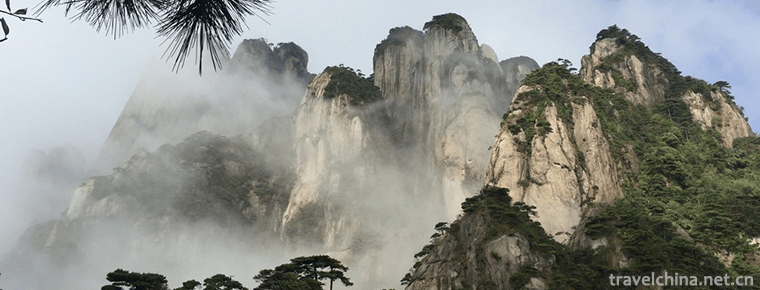
-
Fish Ball
Fish balls, also known as "fish wrapped meat", are mixed up with eel, shark or freshwater fish, mixed with sweet potato starch (* starch), and then wrapped.
Views: 236 Time 2018-11-02 -
Jiang Cudan Canton style pig leg
Except for those with internal fever, dry stool and weak spleen and stomach function, breast enlargement products can be used as a warm-up tonic in winter..
Views: 234 Time 2018-11-02 -
Xibaipo Scenic Area Pingshan County Shijiazhuang
Xibaipo is located in the middle of Pingshan County, Shijiazhuang City, Hebei Province, with a total area of 16,440 square meters. It was the seat of the CPC Central Committee.
Views: 147 Time 2018-11-24 -
Lao Leshan Tourist Scenic Spot
Lao Leshan is located in the south of Henan Province, 9 kilometers southwest of Zhumadian City and 8 kilometers west of Queshan County. National Highway 107.
Views: 135 Time 2019-01-29 -
Zhanqiao
Qingdao Trestle Bridge is one of the scenic spots of Qingdao Seaside Scenic Spot. It is the first national scenic spot announced by the State Council in 1982, and also the first national AAAA-level sc.
Views: 139 Time 2019-03-09 -
Production Techniques of Tibetan Mineral Plant Pigments
Since the emergence of human beings, mineral pigments have been accompanied by human beings. Mineral pigments were first used to draw murals.
Views: 205 Time 2019-04-09 -
Buddha Han boxing
Fohan boxing is also known as Fohan Chuan, commonly known as Buddhist boxing. It is a kind of traditional Chinese martial arts. This boxing originated in Shaolin Temple.
Views: 319 Time 2019-04-29 -
Hequ folk songs
Hequ folk song is a kind of traditional folk music. Shanxi's human geographical environment has formed the "Xikou" mode of life and production in which local people return to Daqingshan and .
Views: 401 Time 2019-05-03 -
Dragon file long dang
"Dragon File", also known as "Bench Dragon", is a craft art with strong local folk traditional characteristics in Yueqing, Zhejiang Province, China. Dragon stalls are developed fro.
Views: 136 Time 2019-05-14 -
Shizhu Tujia Luoer Diao
Shizhu Tujia Luoer Diao originated from Shizhu Tujia Autonomous County, Chongqing. It is a folk song of Luoer tune, which is popular among the Han and Tujia nationalities in southeastern Chongqing. It.
Views: 282 Time 2019-06-15 -
Yao Opera
Yao Opera is popular in Yuyao, Cixi, Ningbo, Zhoushan, Shangyu and Shaoxing. It developed on the basis of folk singing and dancing "horse lantern", "dry boat" and "tea basket&.
Views: 287 Time 2019-07-11 -
Firing Techniques of Zibo Ceramics
During the Wei, Jin, Southern and Northern Dynasties, Zibo began to produce porcelain. During the Tang and Song Dynasties, the technology of making porcelain was constantly improving. During the Ming .
Views: 196 Time 2019-08-16
